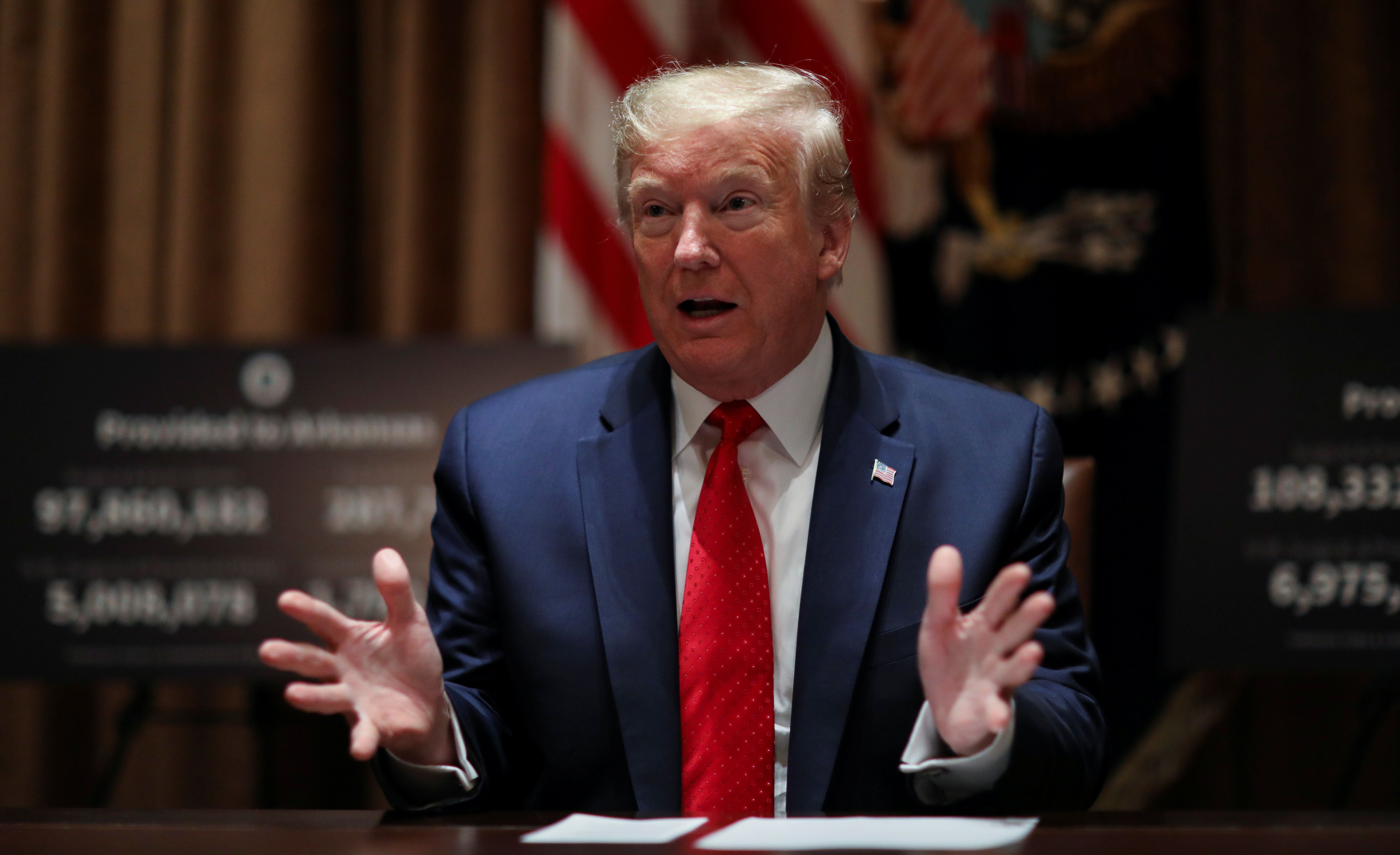The Trump Administration’s Latin America Policy

The current policy of the U.S. administration towards Latin America focuses on relations with individual partners and stems from a general vision about external relations (such as trade) rather than a comprehensive concept specific to the region. In official declarations, Latin America mainly appears as a source of threats to the U.S., including illegal immigration, crime and drug trafficking, and political instability. Less noticeable are the points referring to benefits from closer cooperation with the region. The U.S. approach is visible mainly in its policy towards Mexico, its primary Latin American partner. Mexico has become a key target for Trump’s confrontational rhetoric, especially his plans to build—expand, in fact—a wall on the common border, criticism of Mexican immigrants, and threats to impose import restrictions because of the considerable U.S. deficit in bilateral trade with its neighbour.
Economic Cooperation
In January, President Trump withdrew the U.S. from the Trans-Pacific Partnership (TPP), which included Chile, Colombia, and Mexico. In June, he announced the U.S. would pull out of the Paris climate accord, which already has been ratified by 27 Latin American countries. After initial threats to withdraw the U.S. from NAFTA, he initiated renegotiation of the agreement. Latin American partners have become anxious, seeing these decisions as harbingers of potential revisions of their existing trade deals with the U.S.
Although the U.S. is Latin America’s main commercial partner, its position has been diminishing. One of the reasons for that is the diversification of Latin America’s economic partners, an approach visible for almost a decade now. In 2016, mutual trade surpassed $760 billion (40% of the region’s total), out of which 70% was with Mexico alone. By individual markets, China’s share has been increasing. Despite four times less trade with Latin America than the U.S., China has become the major trade partner for Brazil, Chile, and Peru. The EU, which has developed a comprehensive network of trade ties with the region, has a similar share to China. Notably, Latin American countries have been increasingly interested in cooperation with Asia and Pacific markets. They also will continue to strengthen relations within regional economic blocs, chiefly Mercosur and the Pacific Alliance, but so far, intra-regional trade has been relatively low and is not even one-fifth of total Latin America trade.
Immigration Policy
Latin Americans form the largest minority in the U.S. In 2015, it reached 54 million (more than 17% of the U.S. population), out of which 11 million were estimated to be undocumented immigrants. These numbers are reflected in remittances, which surpassed $70 billion in 2016. Trump administration policy has curbed immigration, mainly by broadening deportation criteria and enforcement. These decisions have been criticised not only in the U.S. but especially in Mexico, where most of the immigrants to the United States come from or transit through from Central America. The increase in deportations may make it harder for the countries of origin to cope with problems such as social inequality or crime. The impact may also affect remittance flows, which represent significant income for most states in the region. This hits states disproportionately. For example, funds sent from the U.S. to Haiti amount to 25% of its $8 billion GDP, while for Mexico they are 2% of its $1 trillion GDP.
Foreign Aid
The U.S. administration’s proposed 2018 foreign aid budget presented in May could undermine collaboration with Latin American countries on tackling the main causes of immigration: economic conditions and security concerns. If Congress agrees, aid for Latin America would amount to $1.1 billion, almost 40% less than in 2016. Moreover, anti-crime measures and border control would be prioritized, reducing funding even further elsewhere. The proposed budget would still leave the U.S. as the chief foreign aid donor to the region, but the reductions worry the main beneficiaries. Among them, especially Colombia, which has been receiving the largest portion of U.S. funds and needs it to support the ongoing peace process, which encompasses implementation of a peace accord with FARC and ongoing negotiations with ELN, the country’s largest guerrilla groups.
Democratic Agenda
From the perspective of democracy promotion, U.S. policy towards Cuba and Venezuela is essential. President Barack Obama’s decision in 2014 to restore diplomatic relations with Cuba after many decades of trying to isolate the island country was an important step to improving the perception of the U.S. in the region. However, in June, Trump announced a ban on deals involving the Cuban military or intelligence-owned businesses. He also re-stated restrictions on Americans’ travel to Cuba, e.g., mandatory use of tour-operator services. The president justified the decision by the lack of progress on democratic changes on the island, although he didn’t fully roll back his predecessor’s work. Trump’s decisions, however, have resulted in uncertainty over the future of policy towards Cuba and the ability of the U.S. to influence democratic transformation in that country.
The worsening economic and humanitarian crisis in Venezuela, as well as the increasing confrontations between the government and opposition, have been a source of worry in the Americas over developments in that country. The U.S. remains Venezuela’s main trading partner, but the latter’s government is one of the foremost critics of the U.S. in the region. Attacks on Venezuela’s constitutional order by the authorities led the Trump administration to impose sanctions against officials. The last portion of restrictions (targeting 13 people) was introduced on 31 July, just after the controversial vote to form a Constituent Assembly.[1] So far, the sanctions have not been effective, and if expanded further they potentially could be harmful to U.S. interests. The U.S. administration has cooperated with other countries in the region, especially within the Organization of American States (OAS.) Even there it was unable to avoid the fiasco of an OAS resolution on Venezuela in June in which several Caribbean countries that receive cheap oil from Venezuela voted “no”, dooming the resolution and exposing the limits of U.S. coalitions in the region.
Conclusions
The Trump administration’s Latin America policy, which consists of reducing engagement and questioning agreements, results in Latin American partners being antagonized and undermines the U.S.’s privileged position in the region. The president’s decisions on TPP and the Paris accord mean the U.S. has ceased being the leading partner in forming free trade and climate policy—issues vitally important to most Latin American countries. It is unlikely, however, that in the longer term the U.S. will lose its status as Latin America’s main trade and foreign aid partner.
The U.S. administration’s approach so far allows for a greater presence of other partners in the region, which will mainly benefit China, whose authorities openly want to continue their expansion into Latin America. Other Asia and Pacific countries (e.g., Japan) also have shown interest in strengthening ties with Latin American partners. At the same time, the political distance will increase between the U.S. and its main adversaries in the region, chiefly Venezuela, for which China and Russia are significant partners and creditors.
Less U.S. involvement in Latin America raises the opportunity for the European Union to strengthen ties with the region. The EU has been negotiating renewed partnership agreements with Chile and Mexico. The Union and Mercosur countries (Argentina, Brazil, Paraguay, and Uruguay) see a chance to strike a trade deal in 2018, following negotiations that with some interruptions have lasted almost two decades. The uncertainty about U.S. policy towards Cuba and the ineffectiveness in its response to the crises in Venezuela may give the EU the chance to strengthen its position with respect to both countries.
[1] B. Znojek, “Crisis in Venezuela,” PISM Spotlight, No. 45/2017, 1 August 2017.


